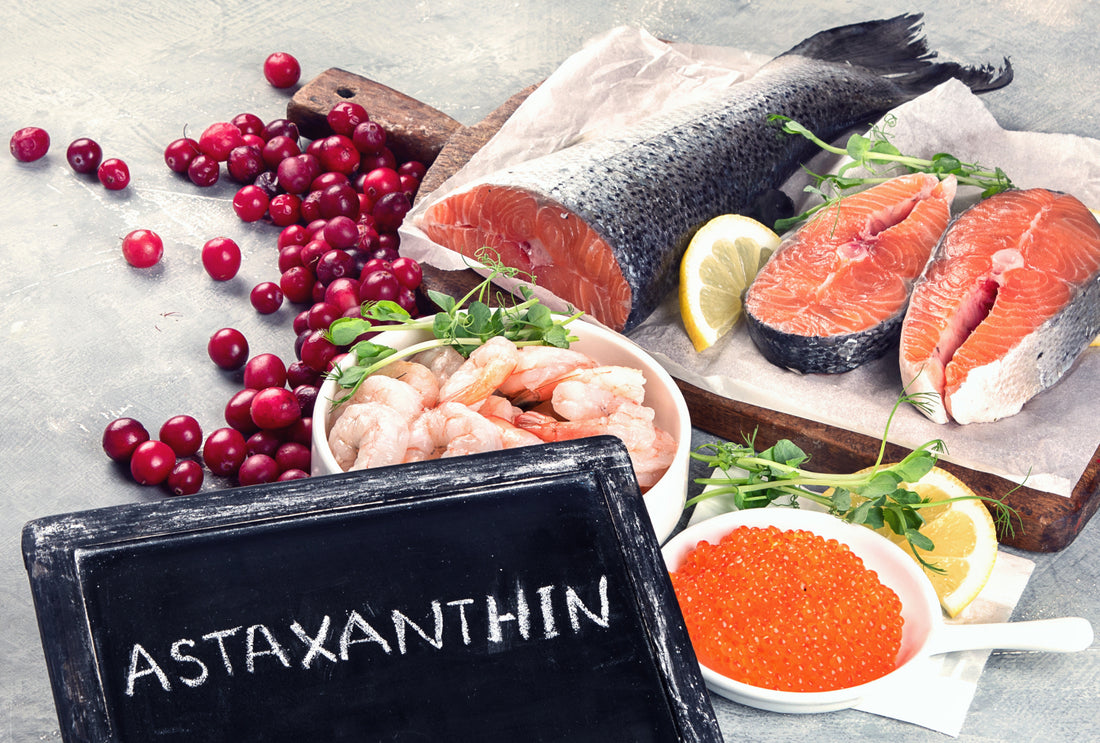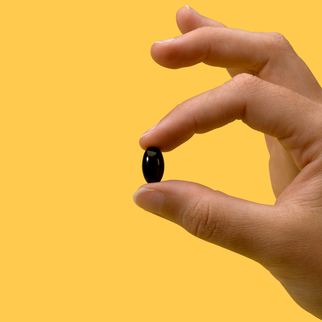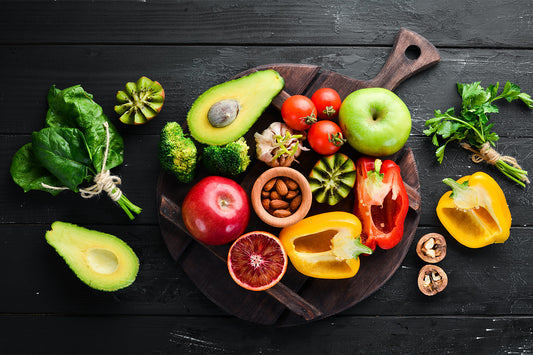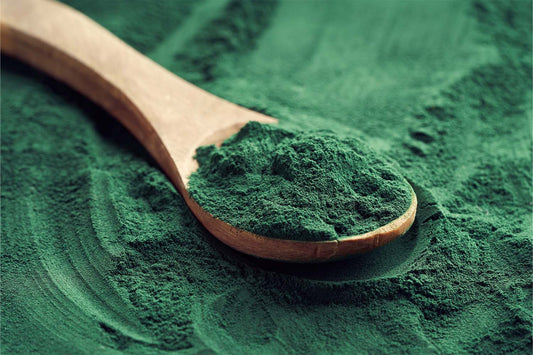If you’re just hearing about astaxanthin now, you’re not alone. Not everyone builds astaxanthin into their daily nutrition, but that’s because not everyone knows all the impressive potential benefits.
Astaxanthin may support several bodily systems, from your skin to your brain. Still, with all the benefits, it still begs the question of how much astaxanthin you should take to make the most of this powerful nutrient.
What Is Astaxanthin?
Astaxanthin is a naturally occurring carotenoid responsible for producing a pinkish-red color in various plants and animals. Common sources of this red pigment include salmon, shrimp, and krill. However, it is believed that astaxanthin develops at a more foundational level and that these creatures have astaxanthin because their diet includes bright red astaxanthin-rich algae. Various types of bacteria, yeast, and fungus also contain astaxanthin.
The biggest bragging rights that astaxanthin owns are its powerful antioxidant properties. As an antioxidant, astaxanthin helps support healthy cells during exposure to free radicals in the body. These harmful molecules can build up in the body due to a process called oxidation, which can result in premature damage to your cells.
Astaxanthin is similar to other carotenoids, like lutein, zeaxanthin, and beta carotene, but it still outweighs their antioxidant capabilities. Compared to these three carotenoids, the antioxidant activity of natural astaxanthin is ten times higher.
Astaxanthin can also be produced synthetically, but the antioxidant properties of synthetic astaxanthin are much weaker than the natural form. In fact, natural astaxanthin is 20 times more potent than the synthetic form.
What Are the Benefits of Astaxanthin?
With its potent antioxidant effects, astaxanthin offers a wide range of potential for supporting your overall health and wellness. Astaxanthin can serve many potential benefits throughout the body, but research has shown it has impressive potential to support three key systems more than others.
Supporting Your Skin Health
One common astaxanthin benefit is that it can support the health of your skin in several ways. One of the first ways that this powerful carotenoid may support your skin is by offering an extra level of support against harmful ultraviolet (UV) radiation from the sun, which can contribute to age spots.
As an antioxidant, astaxanthin can help support the health and appearance of your skin by maintaining the health of your skin cells during exposure to free radicals. In doing so, astaxanthin may help support healthy skin elasticity, texture, and moisture levels.
Supporting Eye Health
Some of the most well-known potential benefits behind astaxanthin are its benefits for your eyes. One of the ways astaxanthin can support your eyes is by helping to maintain the health of your photoreceptors in exposure to harmful blue light.
The antioxidant powers of astaxanthin may also support the health of your eyes, helping to maintain healthy vision function as you age in areas like visual acuity and contrast recognition.
Supporting Brain Health
Some studies have suggested that astaxanthin has neuroprotective properties— or, in other words, it helps to support the health of your brain.
Astaxanthin is one of the few compounds capable of crossing the blood-brain barrier. Because it can pass through this barrier, the antioxidant properties of astaxanthin may help support the healthy aging of brain cells. By supporting the health of your brain cells, astaxanthin helps to promote healthy cognitive function, including a healthy memory and healthy motor function.
How Much Astaxanthin Should You Take Per Day?
Given the benefits of astaxanthin, it raises the question of how much you should take to get the most out of the benefits. There are no established recommended dietary guidelines by the FDA for how much astaxanthin you should have per day, leaving some room for ambiguity.
In a review of dozens of studies, there seem to be no safety concerns with taking natural astaxanthin supplements and consuming a 12 mg dose of astaxanthin per day or more. Different countries have set a range of limits on approved doses for astaxanthin dietary supplements, but this range is fairly wide — different countries have recommended limits of anywhere between 2 and 24 mg of astaxanthin.
More research must be done to determine the exact amount of astaxanthin you should take daily. However, as long as you stick to reliable supplements and don’t exceed the dosages, you can take astaxanthin supplements with peace of mind.
Are There Side Effects To Taking Astaxanthin?
Astaxanthin is generally considered safe to take, and there are very few side effects tied to taking astaxanthin. The few side effects are generally more uncomfortable than dangerous. Still, it is important to be aware of the potential side effects so you know what to look out for.
The most common side effects associated with astaxanthin are more frequent bowel movements and red stool due to the pigment. Astaxanthin may also lower blood sugar levels.
However, taking excessively high amounts of astaxanthin may result in more advanced stomach pain. With that said, make sure to stick to recommended amounts of this nutrient without surpassing the amount listed on the label.
Before taking any supplement, consult your doctor or healthcare professional to see whether a supplement is a good idea for you.
Where Can You Find Astaxanthin?

If you are looking to include more astaxanthin in your diet, you can find it through some marine foods or through natural supplements. Your best bet is to turn to foods or supplements that provide natural astaxanthin and not a synthetic creation. There are a few common sources of astaxanthin.
Salmon
One look at the pinkish color of salmon will tell you that there is a good chance this fish features some level of astaxanthin. You can say the exact same thing for shrimp. Trout and some tropical fish also contain astaxanthin. Salmon provides small amounts of astaxanthin and is also rich in omega-3 fatty acids.
To get adequate amounts of astaxanthin, you would have to eat considerable amounts of salmon or trout. Consuming astaxanthin through salmon may also not be the ideal choice for many people due to a variety of reasons. For one, salmon is not an option for people with seafood allergies or for anyone following a plant-based diet. Salmon is also not the most environmentally friendly option as it is reliant on fishing, either directly or via aquaculture production, which results in declining fish populations and an imbalance in marine ecosystems.
Krill Oil
Krill oil is a supplement made from tiny ocean crustaceans called krill. Although krill oil supplements provide astaxanthin, they are most popular as an omega-3 supplement, providing both docosahexaenoic acid (DHA) and eicosapentaenoic acid (EPA). These omega-3 fatty acids are the two most important omega-3s, and they offer a long list of potential health benefits.
Some of the benefits of taking omega-3 supplements include:
- Promoting a healthy heart
- Supporting healthy cholesterol and blood triglyceride levels already within the healthy range
- Helping to maintain a healthy blood pressure
- Supporting healthy cognitive function
- Helping to promote joint health
- Supporting overall emotional wellness
However, like salmon, the production of krill oil requires extensive fishing and taking these creatures out of the ocean, which disrupts the natural food chain and damages ocean ecosystems. It also isn’t a viable option for people with seafood or shellfish allergies or people on a plant-based diet.
Algae
Many forms of red algae also provide astaxanthin, making it another great option for obtaining this precious antioxidant. Like both salmon and krill oil, algae is also rich in essential DHA and EPA omega-3 fatty acids, offering all the same great potential benefits for heart health, cardiovascular function, and more.
On top of offering the same nutrients, algae has the added benefit of providing a more environmentally friendly and more accommodating option for any lifestyle. Algae is entirely plant-based, which means that it is great for vegans and vegetarians alike. It also means that algae supplements require no harm to ocean life in the process.
Algae is also produced using sustainable methods, so there is little strain on the environment as a whole, making it the all-around best option for astaxanthin supplements.
To see how algae can provide you with both astaxanthin and powerful DHA and EPA omega-3 fatty acids, you can try an iwi life Vegikrill supplement. This supplement provides all the benefits of a krill oil supplement without the downsides. Vegikrill supplements offer omega-3s and antioxidants with no harm done to marine life in the production process.
Get Your Daily Astaxanthin with iwi life
Astaxanthin offers several potential benefits, especially when taking the right amount daily. Choosing the right astaxanthin supplements goes a long way toward supporting your overall health and wellness.
With iwi life Vegikrill supplements, you can enjoy the benefits of both astaxanthin and omega-3 fatty acids, just like you would with krill oil. However, you don’t have to worry about any harmful environmental impacts. To see all the ways you can benefit from algae-based omega-3 supplements, explore the complete family of iwi life products.
Sources:
Astaxanthin: The Key to a New You | Clinical Education
Astaxanthin: How much is too much? A safety review | PMC
On the Neuroprotective Role of Astaxanthin: New Perspectives? | PMC



















